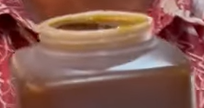Yeah...I noticed that the quote that @WouldBeBrewmaster pulled in was from 2013...
Note that most malted grains like wheat or rye have plenty of diastatic power to be uses as the base grain in a partial mash. I have only done one partial mash ever. It was for a Hazy Pale Ale and I mashed some Malted Wheat and Flaked Oats.
I am not positive that doing a simple partial mash with a generic Pale Malt would have enough impact to make it worth the effort, but I have not tried. It does open you up to base malts that are not available in extract form, such as Vienna Malt, Simpsons Golden Promise. A partial mash is also the best way to pull in starch containing specialty malts like Aromatic, Victory, Biscuit, Honey Malt, Melanoidin, Brown Malt, Special Roast, etc. Also unmalted grains like raw, torrefied or flaked oats, wheat, rye, etc.Adding a small amount of base malts can really help an extract brew out. In a way they were talking about doing very small partial mashes, by adding in a pound or so of 2-row or whatever base malt the AG recipe was using, to the steeping grains, and pretty much aiming for a "steep" at 152....The idea behind it is that extract doesn't carry much of the original flavour of the grains, and that by adding a pound or so of the base malt to the steep/mash can make a huge difference.
Note that most malted grains like wheat or rye have plenty of diastatic power to be uses as the base grain in a partial mash. I have only done one partial mash ever. It was for a Hazy Pale Ale and I mashed some Malted Wheat and Flaked Oats.


































![Craft A Brew - Safale BE-256 Yeast - Fermentis - Belgian Ale Dry Yeast - For Belgian & Strong Ales - Ingredients for Home Brewing - Beer Making Supplies - [3 Pack]](https://m.media-amazon.com/images/I/51bcKEwQmWL._SL500_.jpg)


























